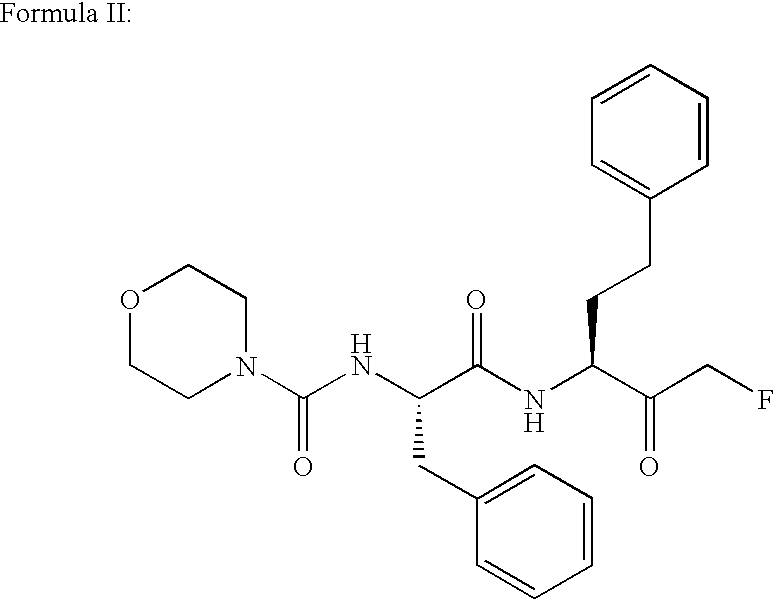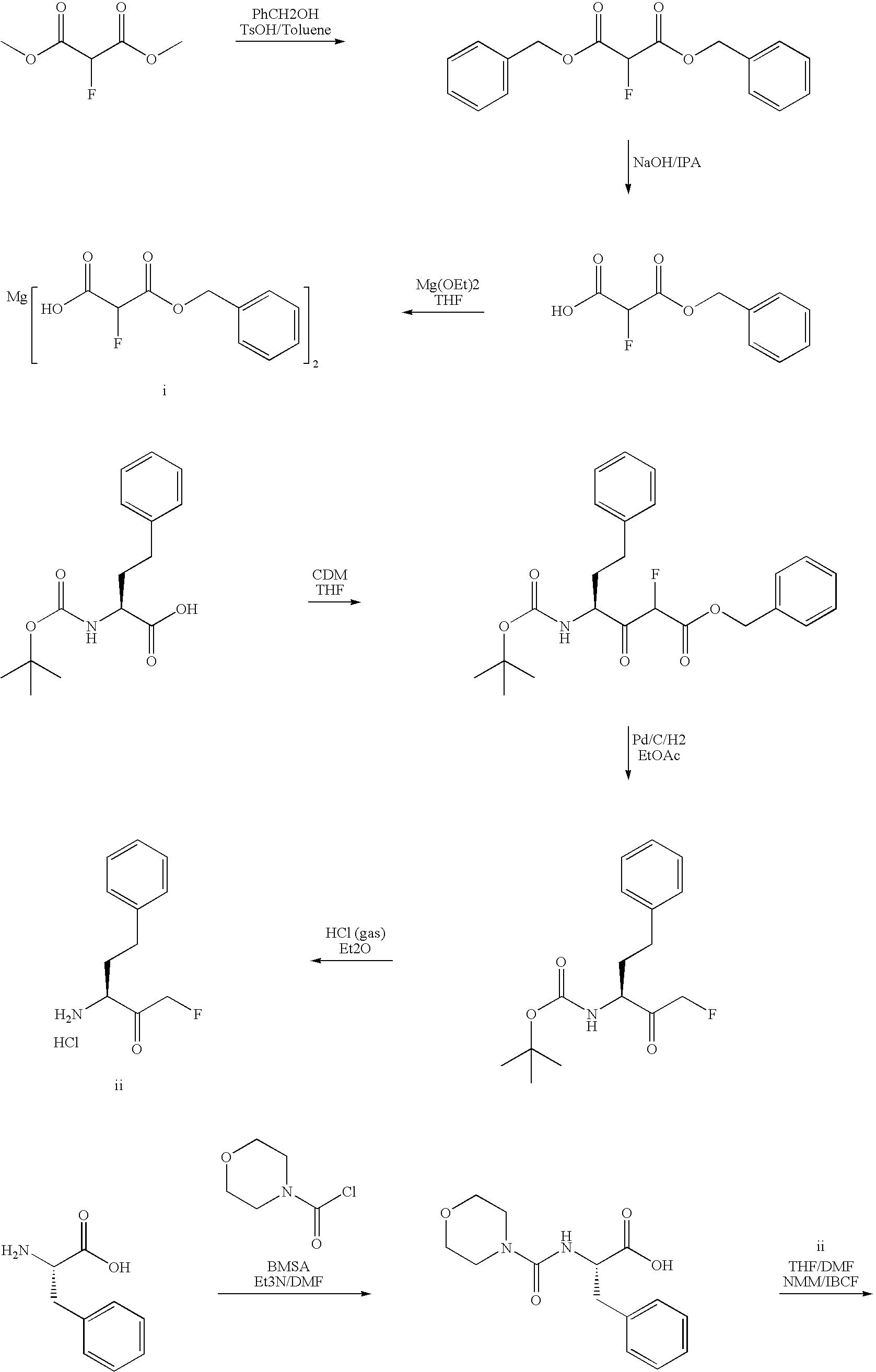Methods for the treatment of chronic pain and compositions therefor
a technology for applied in the field of chronic pain and compositions therefor, can solve the problems of pain no longer being a protective mechanism, neuropathic pain, cancer pain, etc., and achieve the effect of inhibiting cathepsin s gene expression
- Summary
- Abstract
- Description
- Claims
- Application Information
AI Technical Summary
Benefits of technology
Problems solved by technology
Method used
Image
Examples
example 1
RNA Isolation and Expression Profiling of Cathepsin S in Animal Models of Chronic Pain
[0102] In vivo animal models of chronic pain include the following:
Chronic Inflammatory Pain Model:
[0103] The Complete Freund's Adjuvant-induced mechanical hyperalgesia may be used as a model of chronic inflammatory pain (Stein, C. et al. Pharmacol. Biochem. Behav. (1988) 31:445-451). In this model, typically a male Sprague-Dawley or Wistar rat (200-250 g) receives an intraplantar injection of 25 μl complete Freund's adjuvant into one hind paw. A marked inflammation occurs in this hind paw. Drugs are generally administered for evaluation of efficacy, 24 hours after the inflammatory insult, when mechanical hyperalgesia is considered fully established.
Chronic Neuropathic Pain Models:
[0104] Two animal models of chronic neuropathic pain may be used that involve some form of peripheral nerve damage. In the Seltzer model (Seltzer et al. (1990) Pain 43: 205-218) rats are anaesthetised and a small i...
example 2
Therapeutic Effect of Cathepsin S Inhibitors in Animal Models of Chronic Pain: Compound B
[0115] Based on the data indicating that cathepsin S is upregulated in animal models of chronic neuropathic pain, the ability of 3-[(4-morpholinylcarbonyl)-phenylalanylamido]-1-fluoro-5-phenyl-2-pentanone (compound B), prepared as described above) which is known to inhibit cysteine and serine proteases, including cathepsins S, in vitro (U.S. Pat. No. 4,518,528), was studied for its ability to reverse the pathological effects produced in chronic pain models.
[0116] Rats are subjected to the surgical procedures according to the CCI chronic pain model described above. Paw withdrawal thresholds are measured prior to surgery, 14 days later when hyperalgesia is established and then at 1, 3 and 6 hours following a single oral gavage dose of compound B. Results are provided in Table 2, below. Each time point represents data from 6 animals per group. Vehicle control: PEG / methyl cellulose (0.5%)+Tween 80...
example 3
Therapeutic Effect of Cathepsin S Inhibitors in Animal Models of Chronic Pain: Compound A
[0121] The ability of another mixed cathepsin inhibitor, compound A or [7-(2,2-Dimethyl-propyl)-6-thiophen-2-ylmethyl-7.H.-pyrrolo[2,3-.d.]pyrimidine-2-carbonitrile] on reversing the pathological effects produced in chronic pain models was also studied. Data from the Seltzer model of chronic neuropathic pain indicate that this compound can reverse hyperalgesia with a D50 between 3-10 mg / kg (Table 4).
TABLE 4The effect of compound A on established mechanical hyperalgesiain the Seltzer model of chronic neuropathic pain: single oral doseTimepoint3 mg / kg10 mg / kg30 mg / kg30 mg / kg(hrs)VehicleCmpd ACmpd ACmpd ACmpd B10.001.328.6331.1533.4730.303.6452.9468.3241.576−2.08 −1.06 17.6323.0511.97
[0122] As described above, rats in this experiment are subjected to the surgical procedures according to the CCI chronic pain model. Paw withdrawal thresholds are measured prior to surgery, 14 days later when hypera...
PUM
| Property | Measurement | Unit |
|---|---|---|
| temperature | aaaaa | aaaaa |
| pH | aaaaa | aaaaa |
| enzyme activity | aaaaa | aaaaa |
Abstract
Description
Claims
Application Information
 Login to View More
Login to View More - R&D Engineer
- R&D Manager
- IP Professional
- Industry Leading Data Capabilities
- Powerful AI technology
- Patent DNA Extraction
Browse by: Latest US Patents, China's latest patents, Technical Efficacy Thesaurus, Application Domain, Technology Topic, Popular Technical Reports.
© 2024 PatSnap. All rights reserved.Legal|Privacy policy|Modern Slavery Act Transparency Statement|Sitemap|About US| Contact US: help@patsnap.com










